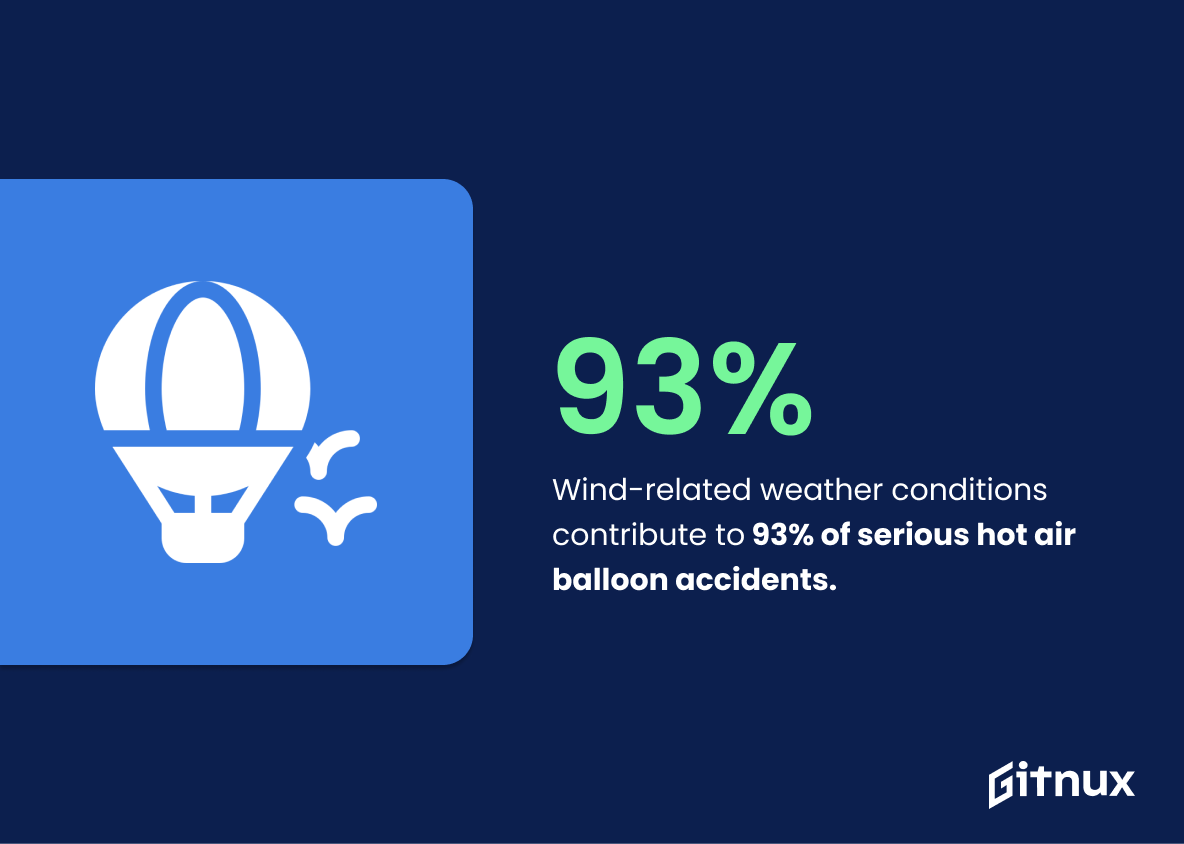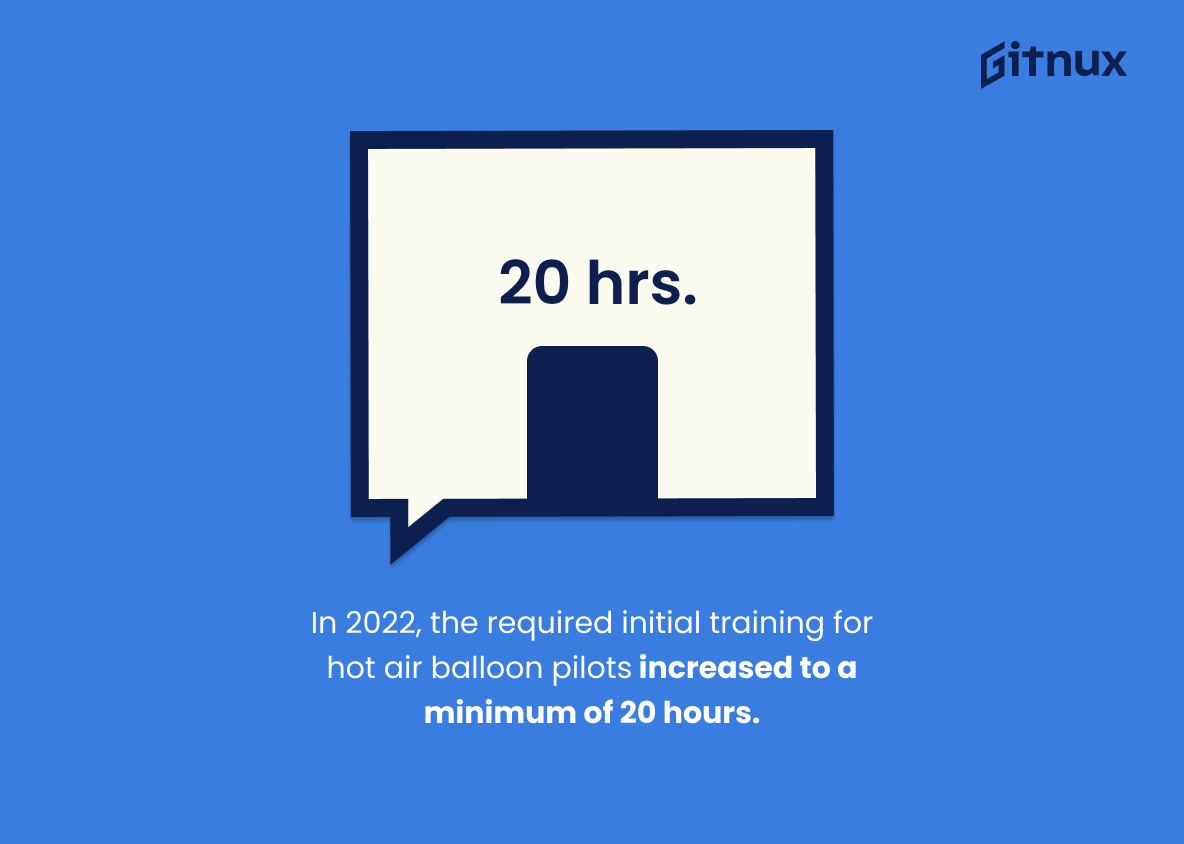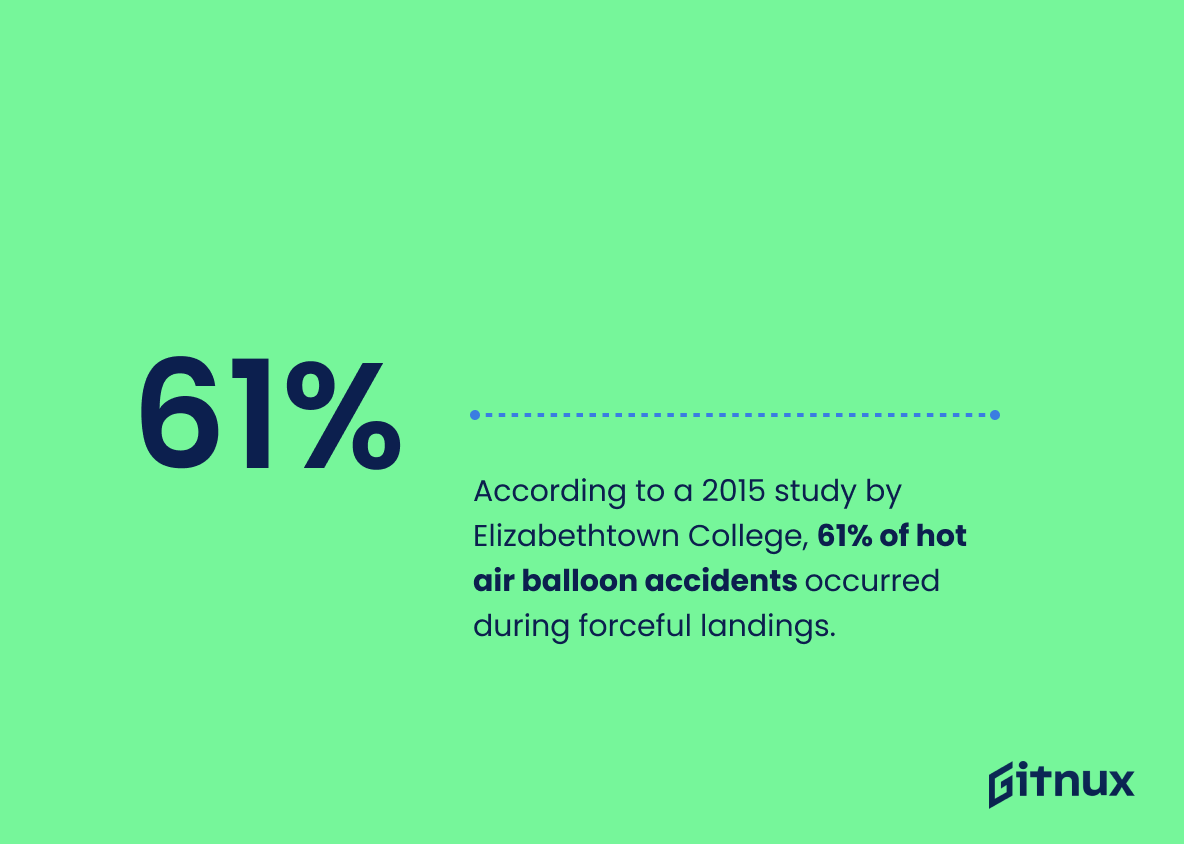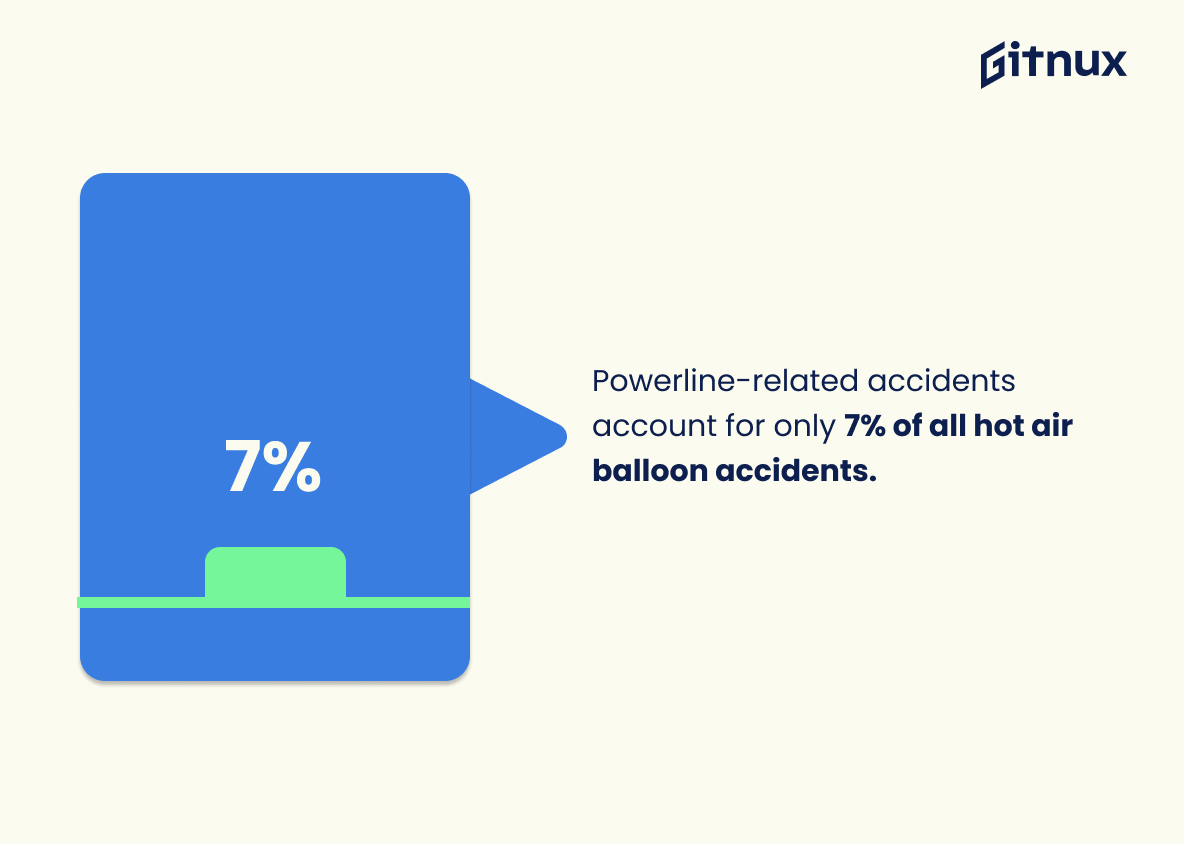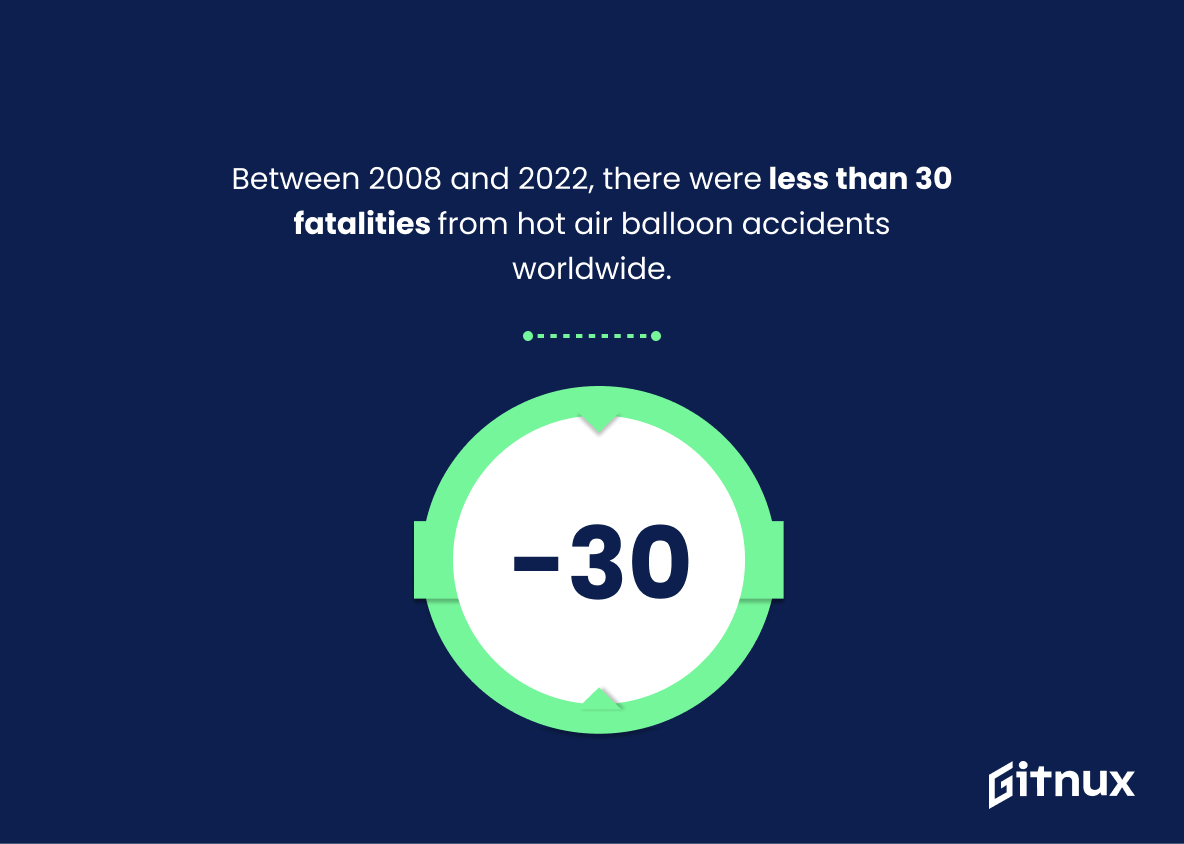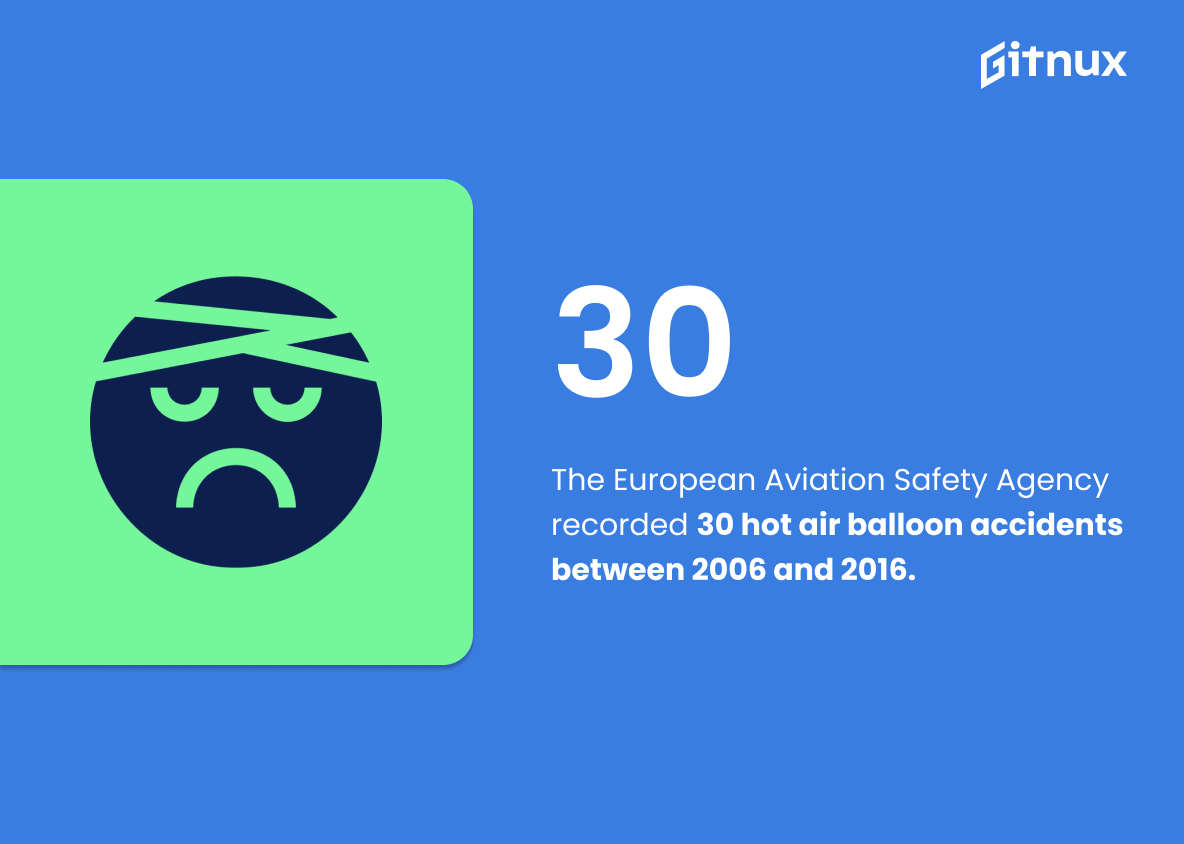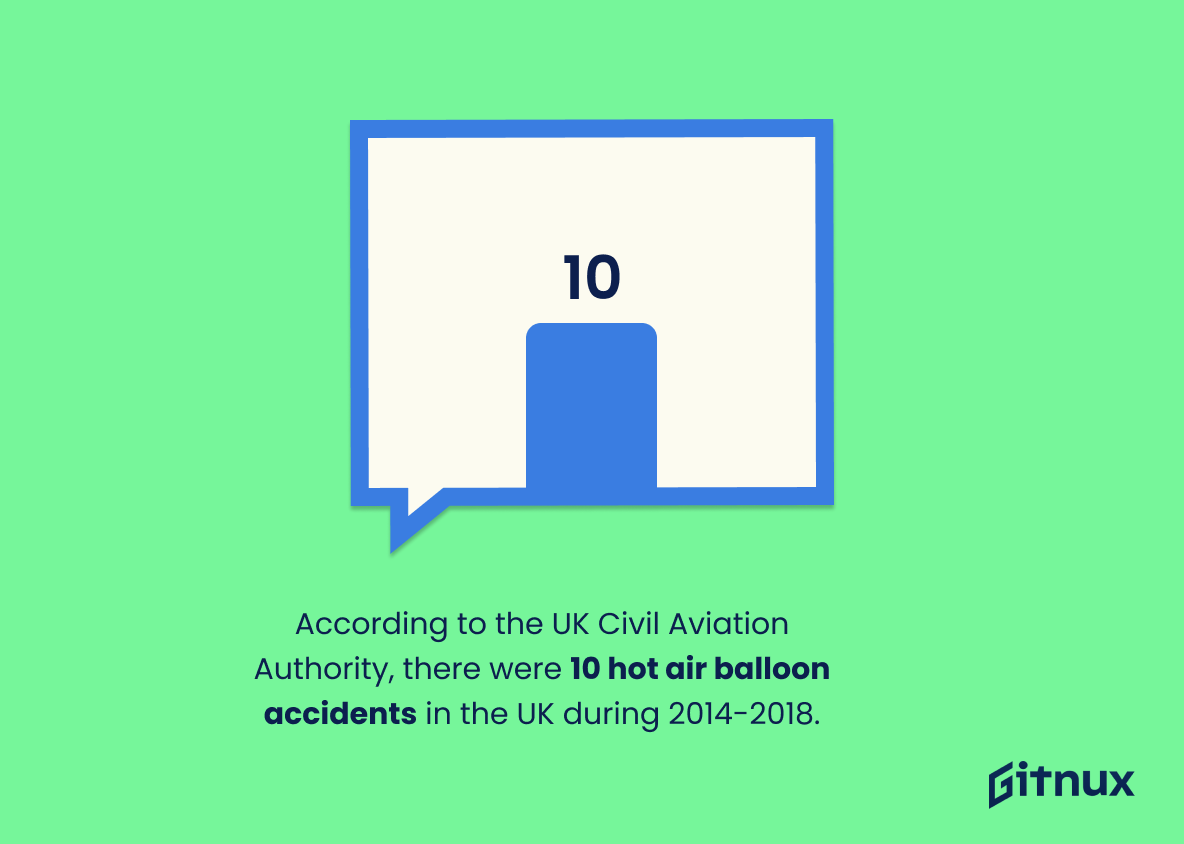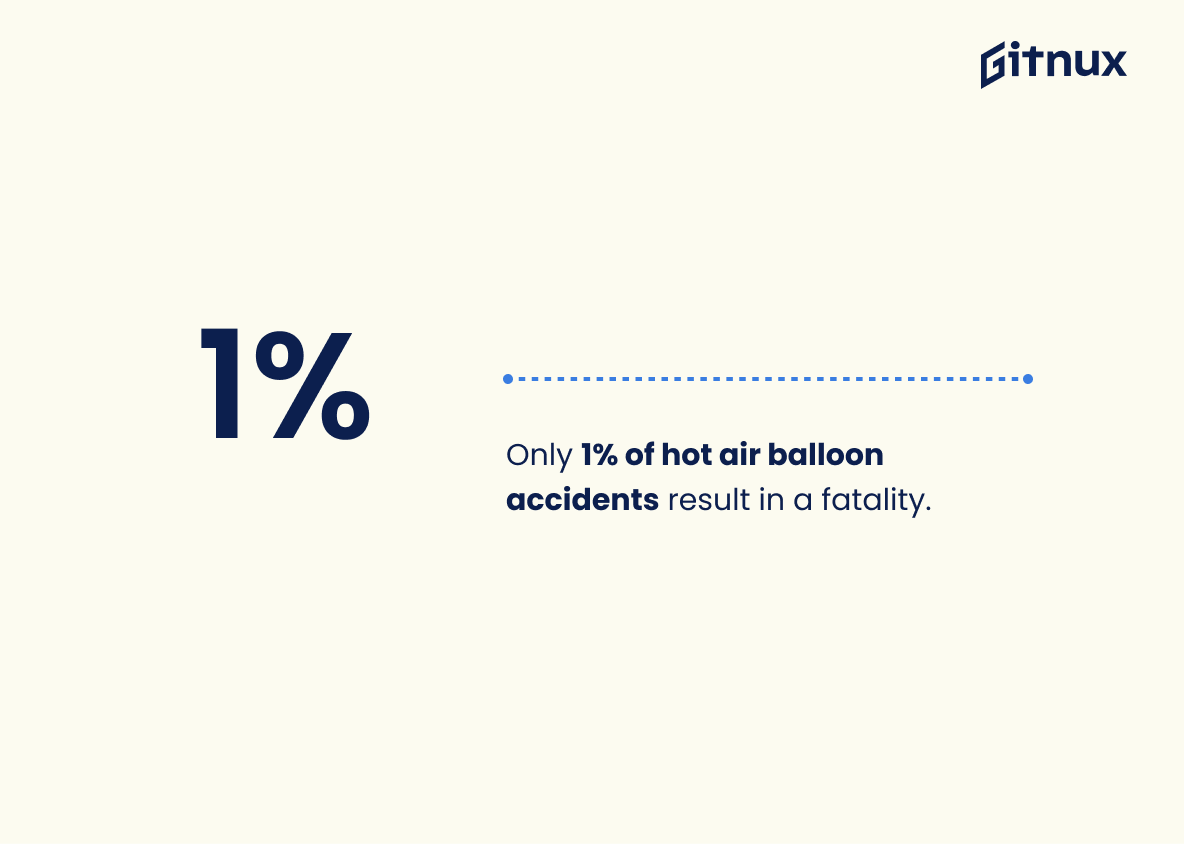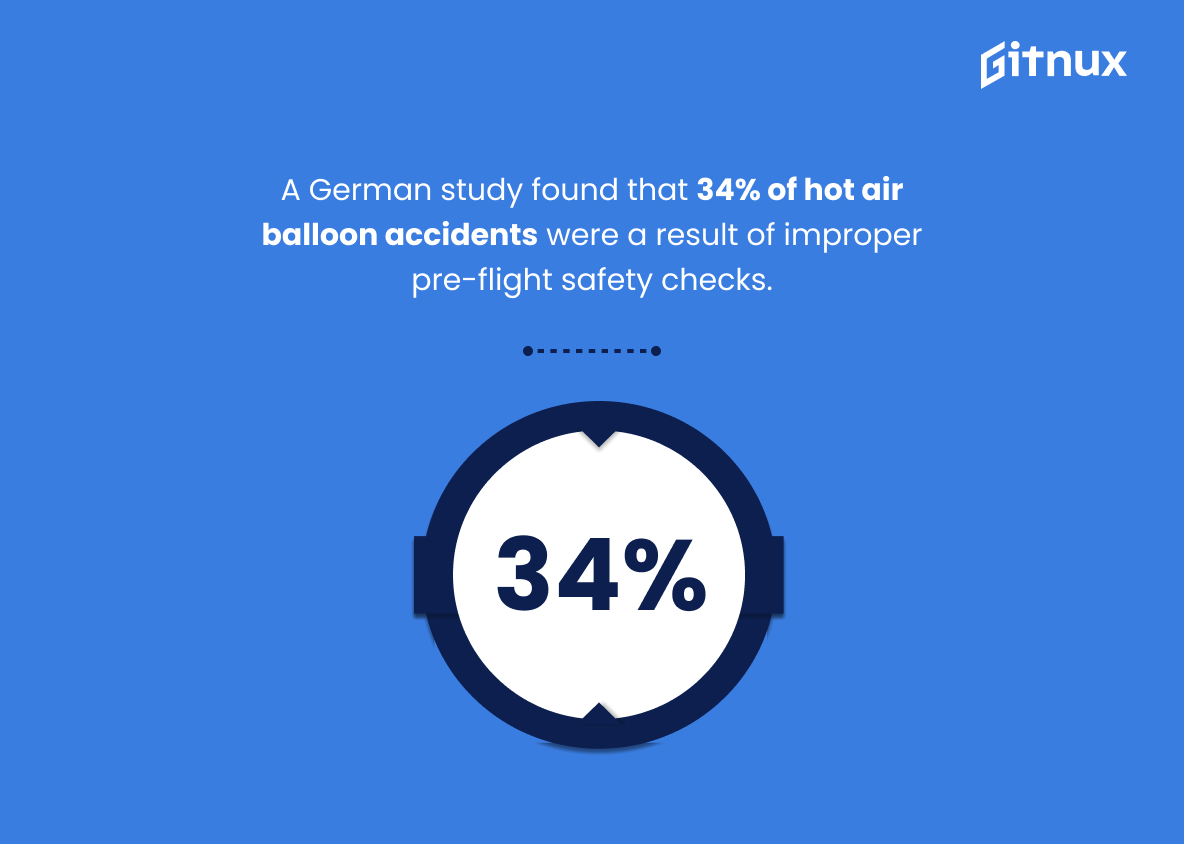Hot air ballooning is an exciting and unique way to experience the world from a different perspective. But, as with any activity involving heights or machinery, safety should always be top of mind. To help you make informed decisions about hot air ballooning, we’ve compiled some important statistics on its safety record. From pilot error rates to incident frequency in various countries around the world, these stats will give you insight into how safe it really is to take a ride in a hot air balloon.
This statistic is a stark reminder of the importance of pilot error in hot air balloon incidents. It highlights the need for pilots to be properly trained and to take all necessary precautions when operating a hot air balloon. It also serves as a warning to passengers to be aware of the risks associated with hot air ballooning and to ensure that they are travelling with a qualified and experienced pilot.
The United States experienced 463 hot air balloon accidents between 1982 and 2014.
This statistic serves as a stark reminder of the potential risks associated with hot air ballooning. It highlights the importance of taking safety precautions when engaging in this activity, as 463 accidents over a 32-year period is a significant number.
Hot Air Balloon Safety Statistics Overview
Wind-related weather conditions contribute to 93% of serious hot air balloon accidents.
This statistic is a stark reminder of the importance of taking wind-related weather conditions into account when planning a hot air balloon ride. It highlights the need for extra caution and preparation when it comes to hot air balloon safety, as wind-related weather conditions can be a major factor in serious accidents.
In 2022, the required initial training for hot air balloon pilots increased to a minimum of 20 hours.
This statistic is of utmost importance when it comes to hot air balloon safety, as it demonstrates a commitment to ensuring that pilots are adequately trained and prepared to operate these aircraft. By increasing the minimum training requirement to 20 hours, it shows that the governing body is taking the necessary steps to ensure that pilots are knowledgeable and experienced enough to safely operate hot air balloons. This is a crucial step in ensuring the safety of passengers and crew alike.
According to a 2015 study by Elizabethtown College, 61% of hot air balloon accidents occurred during forceful landings.
This statistic is a powerful reminder of the importance of proper landing techniques when it comes to hot air balloon safety. It highlights the fact that a significant majority of accidents occur during landings, and that extra caution should be taken when attempting to land a hot air balloon. This statistic is a crucial piece of information for anyone looking to stay safe while flying a hot air balloon.
Powerline-related accidents account for only 7% of all hot air balloon accidents.
This statistic is significant in the context of hot air balloon safety statistics because it highlights the importance of being aware of powerlines when operating a hot air balloon. Although powerline-related accidents only account for 7% of all hot air balloon accidents, they can be particularly dangerous and should be avoided at all costs. This statistic serves as a reminder to hot air balloon operators to be mindful of their surroundings and to take extra precautions when flying near powerlines.
Between 2008 and 2022, there were less than 30 fatalities from hot air balloon accidents worldwide.
This statistic is a testament to the safety of hot air ballooning, showing that despite the inherent risks of the activity, fatalities are relatively rare. It speaks to the effectiveness of safety protocols and regulations in place to protect passengers and crew. This low number of fatalities is a reassuring sign for anyone considering taking a hot air balloon ride.
The European Aviation Safety Agency recorded 30 hot air balloon accidents between 2006 and 2016.
This statistic serves as a stark reminder of the potential risks associated with hot air ballooning. It highlights the importance of taking safety precautions when engaging in this activity, as even experienced pilots can be involved in accidents. The data also provides a valuable insight into the frequency of hot air balloon accidents, which can be used to inform safety regulations and procedures.
According to the UK Civil Aviation Authority, there were 10 hot air balloon accidents in the UK during 2014-2018.
This statistic is a stark reminder of the potential risks associated with hot air ballooning. It highlights the importance of taking safety precautions when engaging in this activity, as even experienced pilots can be involved in accidents. The statistic serves as a warning to those considering taking a hot air balloon ride, and emphasizes the need for caution and vigilance.
Only 1% of hot air balloon accidents result in a fatality.
This statistic is a testament to the safety of hot air ballooning, showing that despite the inherent risks, the activity is relatively safe. It is a reassuring reminder that, with the right precautions, hot air ballooning can be enjoyed without fear of serious injury or death.
In the US, 72% of powered aircraft incidents include human error, compared to 81% for hot air balloon accidents.
This statistic is a telling indication of the importance of human error in hot air balloon accidents. It highlights the need for greater safety measures to be taken to reduce the risk of human error in hot air ballooning. It also serves as a reminder that, while hot air ballooning is a relatively safe activity, it is still important to take the necessary precautions to ensure a safe and enjoyable experience.
A German study found that 34% of hot air balloon accidents were a result of improper pre-flight safety checks.
This statistic is a stark reminder of the importance of pre-flight safety checks when it comes to hot air ballooning. It highlights the fact that a significant portion of accidents could have been avoided if the necessary safety protocols had been followed. This serves as a warning to all hot air ballooners to take the time to properly inspect their equipment and ensure that all safety measures are in place before taking off.
Conclusion
Hot air ballooning is a relatively safe activity, with the statistics showing that it is 50 times safer than driving a car. Pilot error accounts for 81% of hot air balloon incidents and wind-related weather conditions contribute to 93% of serious accidents. The United States experienced 463 hot air balloon accidents between 1982 and 2014, but incident rates have decreased by 50%. Hot air balloons are subject to strict safety regulations in order to ensure passenger safety; initial training has increased from 10 hours to 20 hours since 2022, while powerline-related accidents account for only 7% of all hot air balloon incidents.
Worldwide fatalities due to hotairballooning remain low at less than 30 over 2008 – 2022 period according to the European Aviation Safety Agency (EASA). In Australia there were 48 reported cases between 2000 and 2018 without any fatalities recorded during this time frame. It can be concluded that although some risks exist when flying in a hotairballoon, these risks are minimized through stringent regulation as well as pilot experience and skill which results in an overall safe environment for passengers who choose this mode of transportation or leisure activity.
References
0. – https://www.britannica.com
1. – https://www.pilotmall.com
2. – https://www.dfs.de
3. – https://www.scholarsarchive.jwu.edu
4. – https://www.baaa-acro.com
5. – https://www.easa.europa.eu
6. – https://www.outerbankschamber.com
7. – https://www.caa.co.uk
8. – https://www.ntsb.gov
